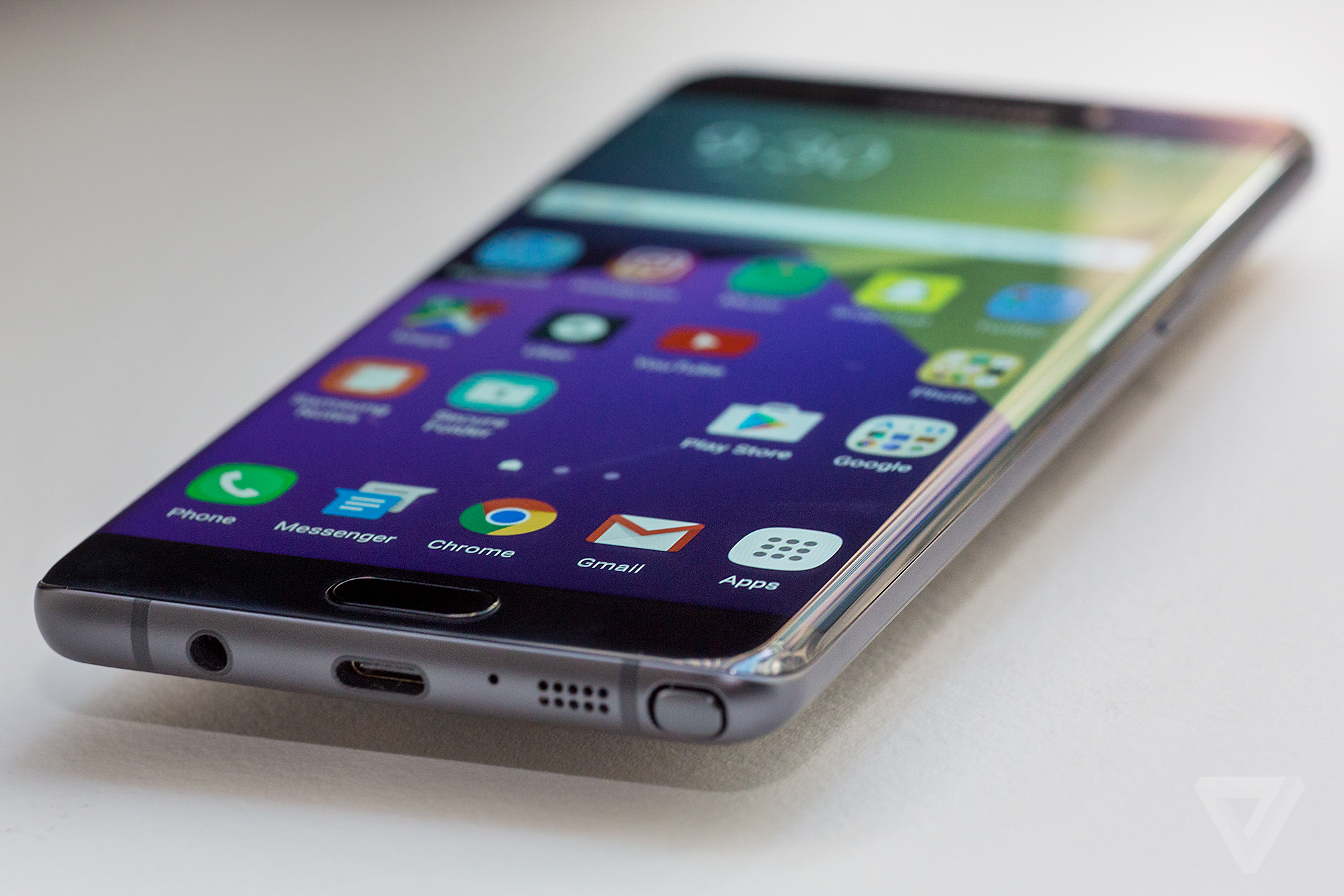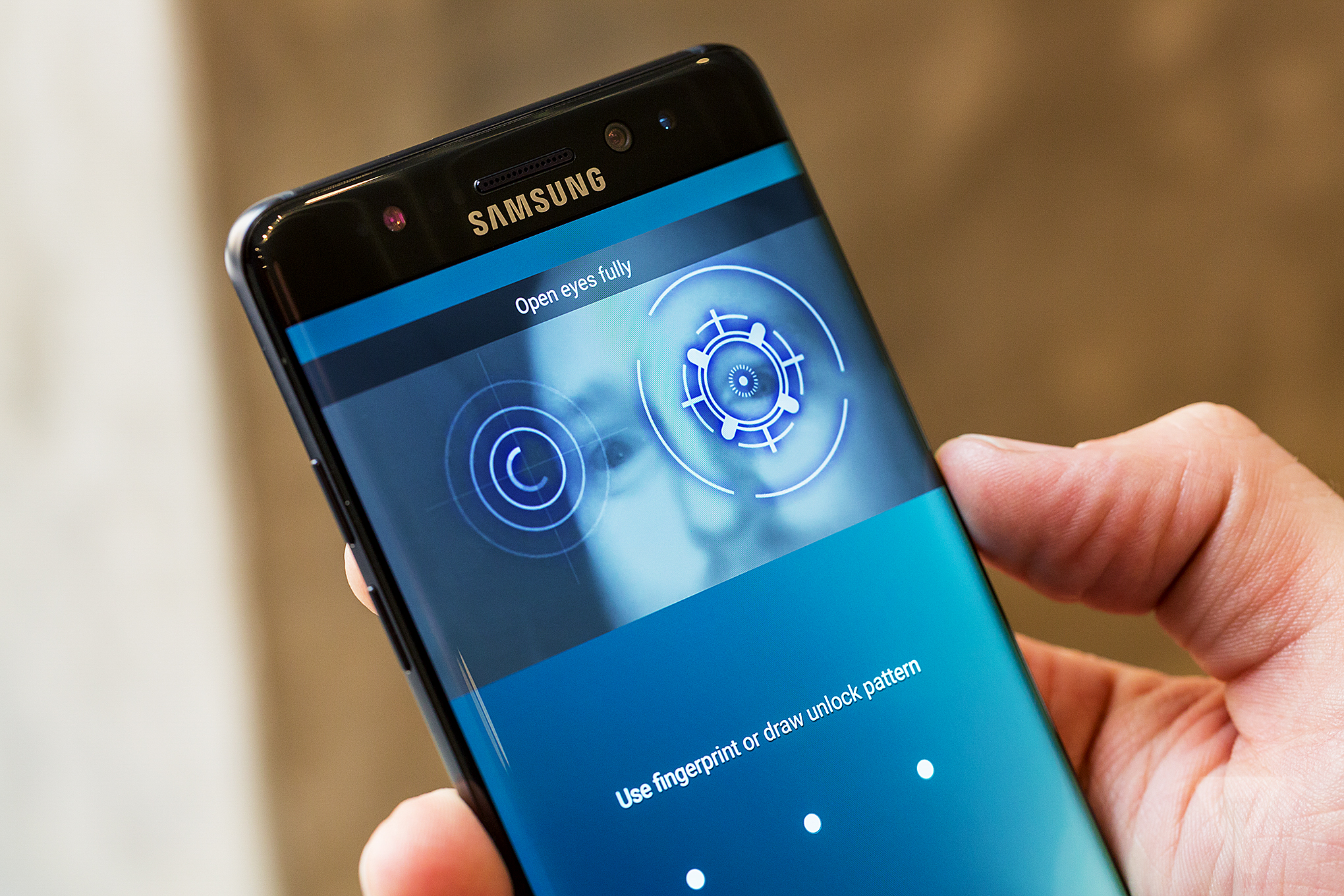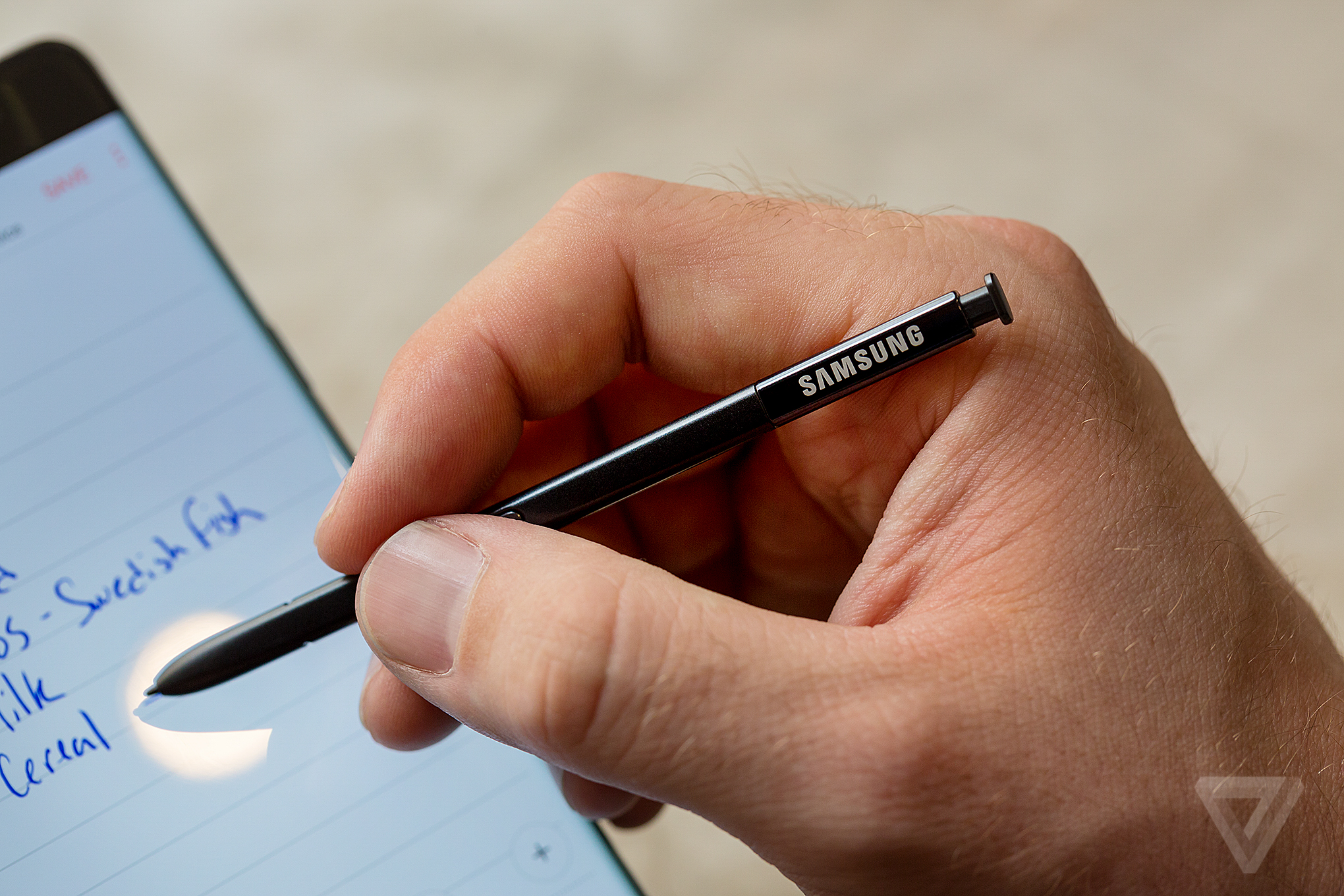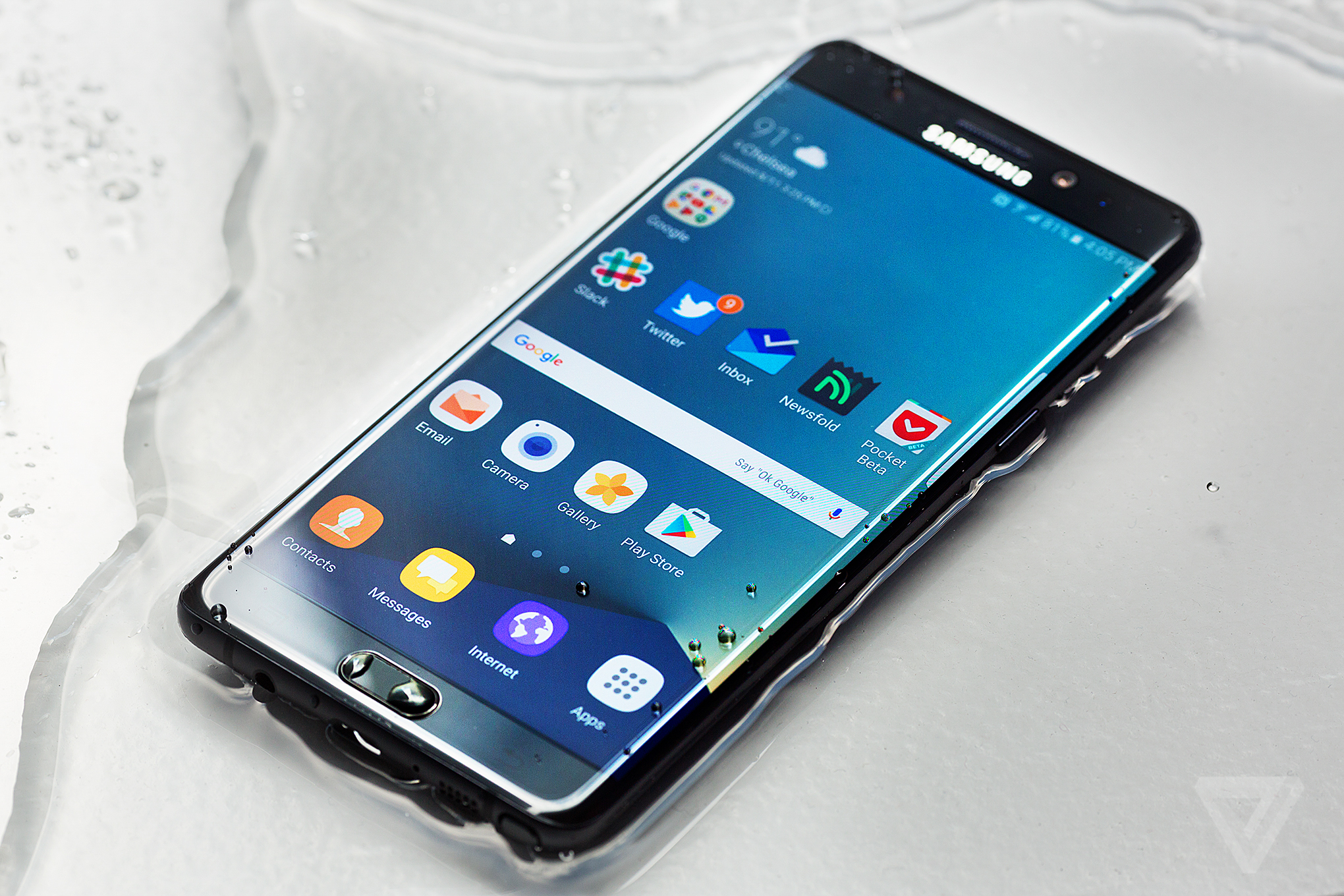The Samsung Galaxy Note 7 Review
http://xpeco.blogspot.com/2016/10/the-samsung-galaxy-note-7-review.html
/cdn0.vox-cdn.com/uploads/chorus_image/image/50400891/jbareham_160811_1180_A_0118.0.0.jpg)
On September 2nd, 2016, Samsung issued a recall on the Galaxy Note 7 because of a safety concern with the battery. The company halted sales and recalled all 2.5 million devices it manufactured. It then issued replacement devices that were deemed to be safe for use by both Samsung and the US Consumer Product Safety Commission. Unfortunately, it turns out that those devices were no safer than the first run and presented many of the same risks. As a result, Samsung has been forced to recall those and is stopping production on the Note 7.
Samsung’s disastrous battery issues have invalidated the praise we have heaped upon its beautifully designed, but fatally flawed smartphone. We leave this review up as testament to almost-was history, but have removed the score in light of the events. We do not recommend you purchase the Note 7, even if you're able to find it in stock. You can read more about the recall and the events that have transpired in our Galaxy Note 7 recall Story Stream.
There is no greater evidence of The Future of Computing than the big-screened smartphone. Big phones have become the de facto personal computers for many people, taking the place of countless devices, including laptops and tablets. They’ve become more than just phones in ways that smaller devices haven’t matched — research shows that owners of phablets use their devices a lot more than others.
But big phones come with their own set of baggage that isn’t seen on normal-sized phones. They are frequently clumsy to use, awkward to hold, and less attractive than their smaller counterparts. More often than not, a big phone is just a stretched-out version of a small phone, without any consideration made for the larger display.
Samsung has been changing that dynamic lately, building phones with big screens that don’t feel like big phones at all. Its new Galaxy Note 7 is the best big phone ever made for a variety of reasons, but mostly because it feels like a device that was designed to be a big phone from the beginning with features that mitigate the tradeoffs inherent with big devices. I can’t say the same for the iPhone 6S Plus, Nexus 6P, or any other giant phone on the market, which are downright clunky in comparison.
The Note 7 is Samsung’s best device ever, and arguably the best big phone ever made. If that’s all you’re looking to know, then you can stop reading right now and go place your order. It will cost you $849 or more, depending on carrier, and can be preordered now. It will be available in stores starting on August 19th.
But it’s interesting to explore why the Note 7 is the best big phone ever. Samsung has more experience with big phones than any other company, and it is leveraging that to improve the big phone experience. It’s the only company that’s saying a big phone doesn’t have to feel like a big phone or be saddled with compromises often associated with them. Samsung wants you to have your cake and eat it too, and that cake’s flavor is the Note 7.
Apple’s iPhone monopolized the talk about smartphone design for nearly a decade. But in the past year and a half, Samsung’s design department has made dramatic leaps and bounds, cranking out beautiful, functional designs and rapidly iterating on them. Where Apple has been content with a two-year hardware design cycle (and by all accounts, it appears to be moving to an even slower three-year cycle), Samsung has improved and updated its designs on a rapid-fire, six-month basis. Since last year’s Galaxy S6 design revitalization, Samsung has iterated three times on its formula and the Note 7 is the finest design Samsung has ever produced.


The Note 7’s combination of metal and glass, symmetrical sides, and rounded corners make it the nicest-looking phone I’ve ever laid eyes on. It’s just a beautiful piece of gadgetry. But the design isn’t just for aesthetics: it’s all in service to that big screen and making sure that the compromises that come with a large display are minimized. The Note 7’s design is remarkably functional, giving the Note 7 a normal phone feel, even though it has a massive display.
Part of that is because the Note 7 is actually smaller than any other phone in this class. It’s 4.7mm shorter and 4mm narrower than the iPhone 6S Plus, 5.8mm shorter and 3.9mm narrower than the Nexus 6P, and 2.2mm narrower than last year’s already trim Note 5. The Note 7’s dimensions make it easier to handle, easier to slip into a pocket, and generally nicer to use than any other phone with a big screen.
The curved sides of the display don’t scream "look at me" quite as much as the S7 Edge’s dramatic bends. They have a subtle curve that provides flatter display area and distorts the image on the screen less, yet still manages to make the Note 7 narrower than if it had a fully flat display. The Note 7’s rear glass panel mirrors the front curves exactly, giving the phone its visual symmetry and comfortable feel.
These qualities of efficient design and premium materials are found on the S7 Edge too, but the Note 7 has been refined even further, with softer edges, cleaner lines, and a nicer feel in my hand. Just five months ago, I said that the S7 Edge was the most impressive smartphone hardware I’d ever held, and now Samsung has trumped itself with the Note 7.

The Note 7 shares a lot of other qualities with the S7 Edge, as well. It has the same type of Super AMOLED quad HD resolution display, albeit larger and slightly brighter; the same Qualcomm Snapdragon 820 processor and 4GB of RAM; the same water resistance and expandable storage; the same excellent cameras; and a similar capacity battery with the same fast wired and wireless charging. The only notable spec differences are that the Note 7 comes with 64GB of internal storage as opposed to the S7’s 32GB and it uses a USB Type-C port instead of the old Micro USB jack.
That means that a lot of the things about the S7 Edge apply equally here. The screen is pixel-dense, color-rich, and gorgeous to look at (and can get even brighter than the already blindingly bright S7’s screen in daylight); the processor and RAM combine for fast, reliable performance; and the water resistance is a feature I think every high-end phone should offer. The Note 7’s 3,500mAh battery is 17 percent larger than the battery in last year’s Note 5, and it’s able to last me through a full day of use. At this point, I’d love for a flagship phone like the Note 7 to last multiple days on a charge, but the fast charging features make it easy to top up when I need to.

And since the Note 7 has the same 12-megapixel camera as the S7 series, it has arguably the best smartphone camera available right now. (It’s certainly not a downgrade from last year’s 16-megapixel camera. Check out our interview with Samsung’s Kim Gae-youn for more on why.) The optically stabilized, f/1.7 lens is excellent for low light shots and focuses quicker than any other phone’s camera, and the camera app launches rapidly with a double-press of the home button. The app has been cleaned up for the Note 7, with a simpler interface that relies on gestures for switching between front and rear cameras and changing modes.

The big new headline feature on the Note 7 is the iris scanner, which uses a special front-facing camera array to scan your eyes and unlock your phone. It provides an alternative to using a password, PIN, pattern, or fingerprint for authentication.
The iris scanner works as advertised, often quickly scanning my eyes and unlocking the phone. It uses infrared technology, so it can work in low light. But it’s clumsier to use than the already very quick fingerprint scanner, as I have to turn on the display, swipe up, and then bring the phone awkwardly close to my face to trigger it. It’s a fun party trick, but I ended up just forgetting about it and using the fingerprint scanner instead.
The second most important thing that separates the Note 7 from Samsung’s other devices and every other big phone is the updated S Pen. The S Pen has been a hallmark feature of the Note line since its inception — it’s really what makes a Note a Note, and not just another phone with a big screen. The S Pen can be used to jot down notes, draw pictures, or navigate the phone’s interface.
But by far the coolest new S Pen feature is the ability to create GIFs from any video in just a few taps. In a matter of seconds, I can create a GIF from a YouTube video, add notes or stickers to it, and then share it right from my phone. It’s not something I’d have guessed the S Pen would be able to do, but it’s fun and easy to use. Further, the S Pen has the same level of water resistance as the phone itself, and it can even work when the phone is wet, making it the most over-the-top way to jot down ideas in the shower.
Samsung has tweaked the hardware of the S Pen this go around, too. The pen tip itself is narrower and has twice as many levels of pressure sensitivity for a more natural writing feel. And, unlike with last year’s Note 5, it’s impossible to put it in backwards and damage the phone.
I like that I can now use the S Pen to magnify parts of the screen, multitask between two apps, or instantly translate text using Google’s Translate services. Artists might appreciate the new color blending features available when drawing in Samsung’s app. The four disparate apps that Samsung used to package on the Note have been combined into a single Samsung Notes app that’s easier to use and simpler to navigate. The ability to take notes right on the phone’s lock screen that debuted with last year’s Note 5 has been expanded with the ability to "pin" notes there for quick access. My only complaint with Samsung Notes is that it doesn’t easily sync with other services, such as Evernote or OneNote, instead relying on Samsung’s own proprietary backup and sync. (You can share notes to other apps, but that can only be done one note at a time and is rather tedious.)



To go along with its refined hardware design, the Note 7 has a refined version of Samsung’s software interface on top of Android 6.0 Marshmallow. (An update to Android 7.0 Nougat has been promised, but Samsung has not yet provided any timing for when that might happen.) It’s both nicer to look at and easier to use than Samsung’s earlier software efforts.
There are a couple new features that have been cribbed from other devices or third-party apps, such as the new nighttime display mode similar to Apple’s Night Shift that can be triggered based on sunrise and sunset. The always-on display feature from the S7 has been improved with more calendar layouts and support for all third-party app notifications, making it much more useful than before.
BLOATWARE REMAINS AN ISSUE
Despite the interface improvements, the Note 7 is still loaded with carrier bloatware and duplicative apps, things that have been dogging Samsung phones for years. The T-Mobile version I’ve been testing has a half-dozen apps preinstalled, including the incredibly useless Lookout app scanner, and you can be sure that the other carrier models are similar. There are also two email apps, two browsers, two photo apps, two voice assistants, and Samsung’s own versions of Android’s calendar and calculator apps instead of the ones that Google already develops. The only real way to avoid carrier bloatware entirely is to wait for the unlocked version of the Note 7 to arrive, but Samsung has yet to say when that will be available, and it will still likely have duplicative apps. These aren’t deal-breaking problems, but they are annoyances that don’t match up with the rest of the Note 7’s stellar experience.

Being the best in a category as competitive as smartphones isn’t something that can be done on the back of one or two features. The Note 7 is not the best because its 5.7-inch screen is bigger than every other phone’s display (though it is arguably better); it’s not because it’s dramatically more powerful or faster than any other phone; it’s not because its battery is substantially longer lasting than others; and it’s not because its camera is markedly better than anything else you could buy, including other phones from Samsung. It’s the best because it has the best combination of all of those qualities, wrapped in a skin that’s beautiful to look at and lovely to hold.
The price is high, though not unheard of, and if you want the best, paying a lot for it shouldn’t come as a surprise. And while the carrier bloatware is still a problem, the Note 7 is easily the best big phone I’ve ever used and quite a few steps ahead of its competitors. If you’re debating between the also excellent S7 Edge and the Note 7, it’s hard to go wrong either way, but the Note provides more features and a better design for a minimal cost over the S7.
THE NOTE 7 IS QUITE A FEW STEPS AHEAD OF ITS COMPETITORS
Apple’s take on the big phone Future of Computing was seen as a revelation for millions of iPhone users, but it didn’t feel like a full commitment to the big phone concept. It’s just a bigger iPhone, with the same hardware design and software experience. The same can be said of the Nexus 6P and many other big Android phones, which aren’t markedly different than smaller options. The Note 7, however, leverages Samsung’s years of expertise building big phones, and its hardware design and software features lift it up above the fray. It’s the least compromised big phone you can buy, and it doesn’t force you give up anything that makes big phones so great.
If you haven’t yet been sold on why a phone with a big screen can change how you think about mobile computing, the Note 7 is the best pitch yet.


 Click on The Image & Start Earning !
Click on The Image & Start Earning !




